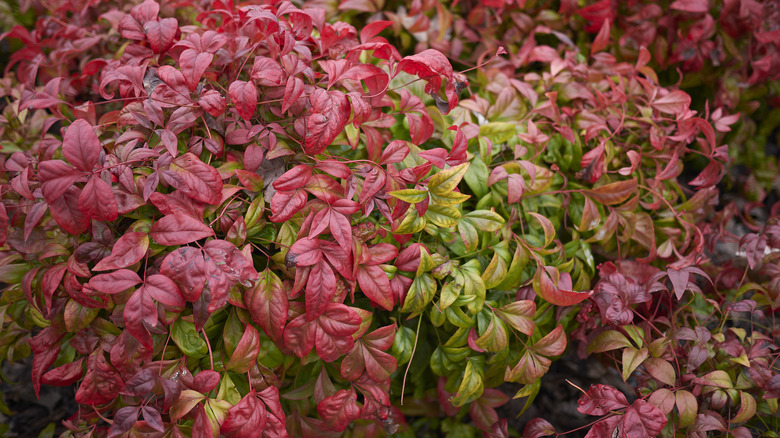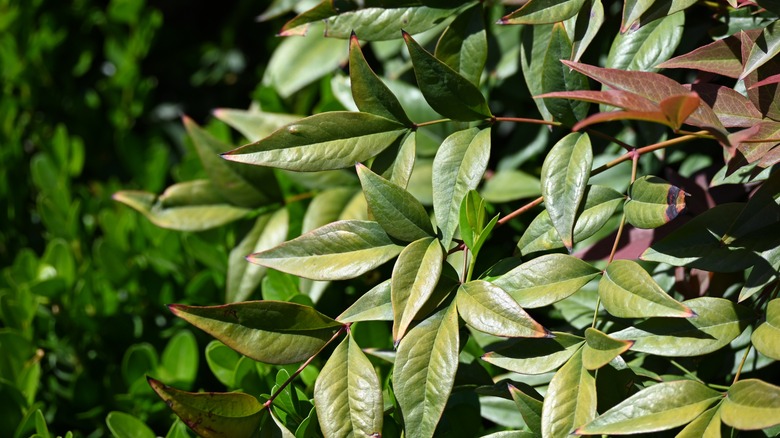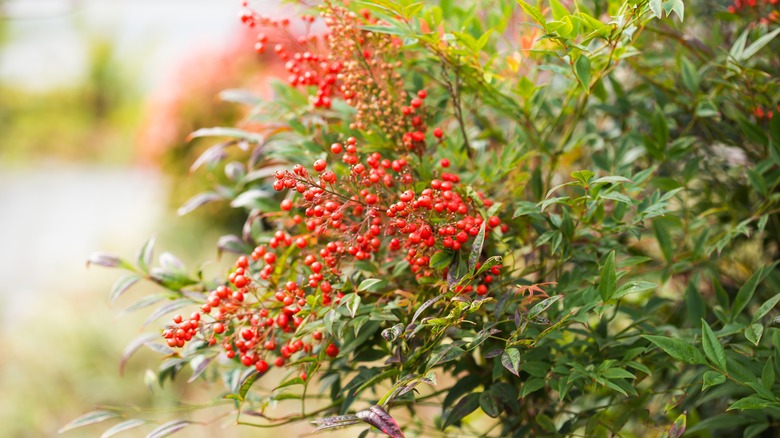Nandinas: Pros And Cons You Should Know Before Planting
Nandinas (Nandina domestica) are a hardy shrub native to eastern Asia. These plants are popular in landscapes because they are low-maintenance and come in a variety of sizes and colors. Also known as heavenly bamboo or sacred bamboo, nandinas are considered anything but heavenly in some areas. Although these common names include "bamboo," they are not related to that family of plants. Instead, these names come from the bamboo-like growth habit of some varieties.
If you are considering adding nandinas to your landscape, learning about the specific features of the cultivar you want to plant is essential. Some options are toxic to wildlife, while others are not. In fact, some varieties of these bushes are illegal to plant in some southern states because they are considered invasive. Even in areas where they are not on the official invasive species list, they are considered a nuisance. Thankfully, if you already have your heart set on adding nandinas to your landscape, there are some more environmentally-friendly options available.
Pros of nandinas in the landscape
Some of the features that make nandinas invasive are the same ones that make them appealing to landscapers. These bushes grow quickly, so they fill in a landscaped area nicely without having to wait years for them to reach maturity. In USDA Hardiness Zones 6 and warmer, nandinas are winter hardy, providing year-round color and texture in your yard. During the cold winter months, when everything else has gone dormant, you can still enjoy pink, red, and bright green hues. If you live in a colder climate, nandinas provide color and interest from spring through fall.
Thanks to dedicated plant cultivators, we now have many options that feature the hardiness of nandinas in different sizes. For example, if you are looking for a small bush for a planter, Fire Power nandina only reaches 2 feet tall by 2 feet wide at maturity. There is even a ground cover cultivar of this versatile plant called Flirt.
Cons of heavenly bamboo
As we mentioned, in some regions, nandinas are considered invasive. However, this is only true of varieties that produce berries. Many new cultivars are sterile — they do not bloom or produce fruit. The berries of the classic and most common variety of nandina, the one that is referred to as "heavenly bamboo," are not only problematic because they contain the seeds that cause the plant to become invasive. These bright red berries make the plant more attractive in the winter months to both the human eye and as a food source for birds. Unfortunately, these berries are so toxic to our feathered friends that they cause internal bleeding and death. Because they contain cyanide and other toxins, nandina berries are also toxic to pets and humans. This is certainly not a plant you want to have where children and dogs play.
To prevent the possibility of toxins reaching your loved ones or wildlife, opt for one of the many non-seed-bearing varieties, like Gulfstream or Lemon Lime. If you already have heavenly bamboo in your landscape and do not or cannot remove it (mature plants are very difficult to eliminate), clip off the blooms before they mature into berries.


